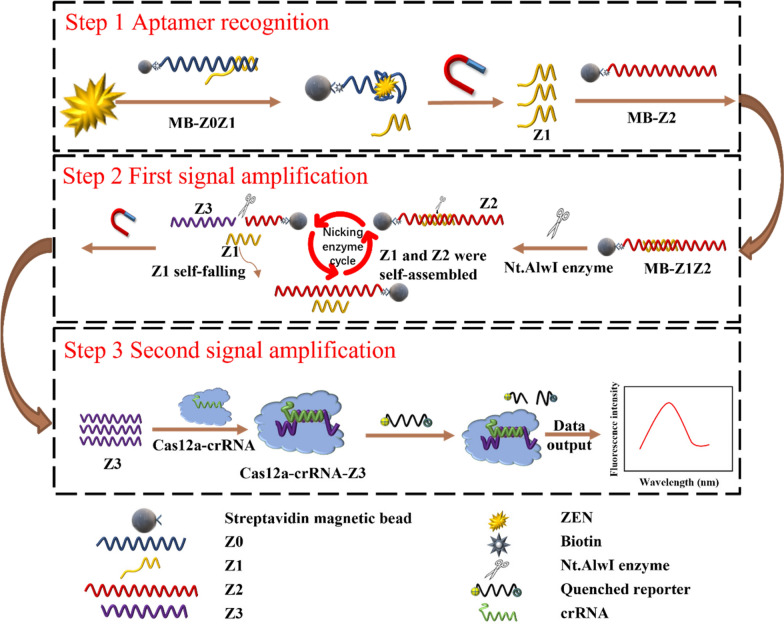Fig. 5.
. Magnetic-bead-assisted dual-signal-amplification aptasensor for sensitive ZEN detection based on the Nt.AlwI enzyme and the Cas12a enzyme. Step 1: The aptamer probe recognizes the ZEN toxin and causes Z1 to dissociate into solution by competitive binding. Step 2: After Z1 and Z2 were hybridized, the cutting activity of the Nt.AlwI enzyme was activated, the Z2 chain was cut to release Z3, Z1 was self-shed after the cutting was finished and it hybridized with Z2 again, and a large amount of Z3 was released by the enzyme-cutting signal amplification to achieve the first signal amplification. Step 3: The combination of Z3 and the Cas12a-crRNA complex activates trans-cleavage activity, non-specifically cleaving any ssDNA so that the added fluorescent signal molecule was cleaved and the quenched fluorescence was restored (Figure from Yao et al., Foods 2022, 11(3); Copyright: CC BY License)

